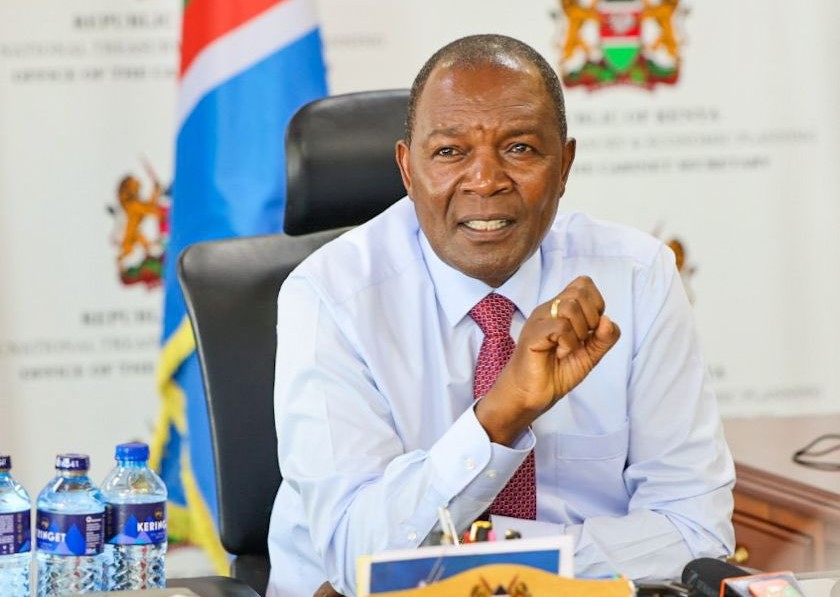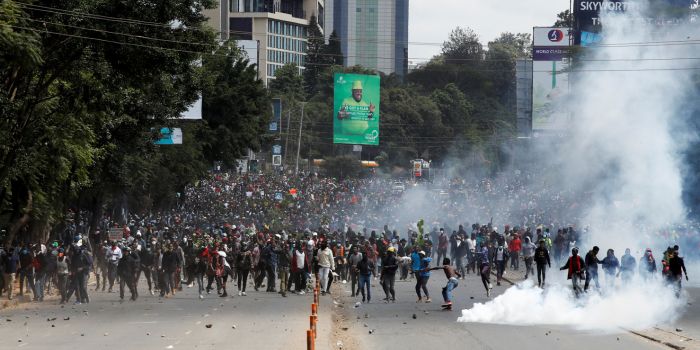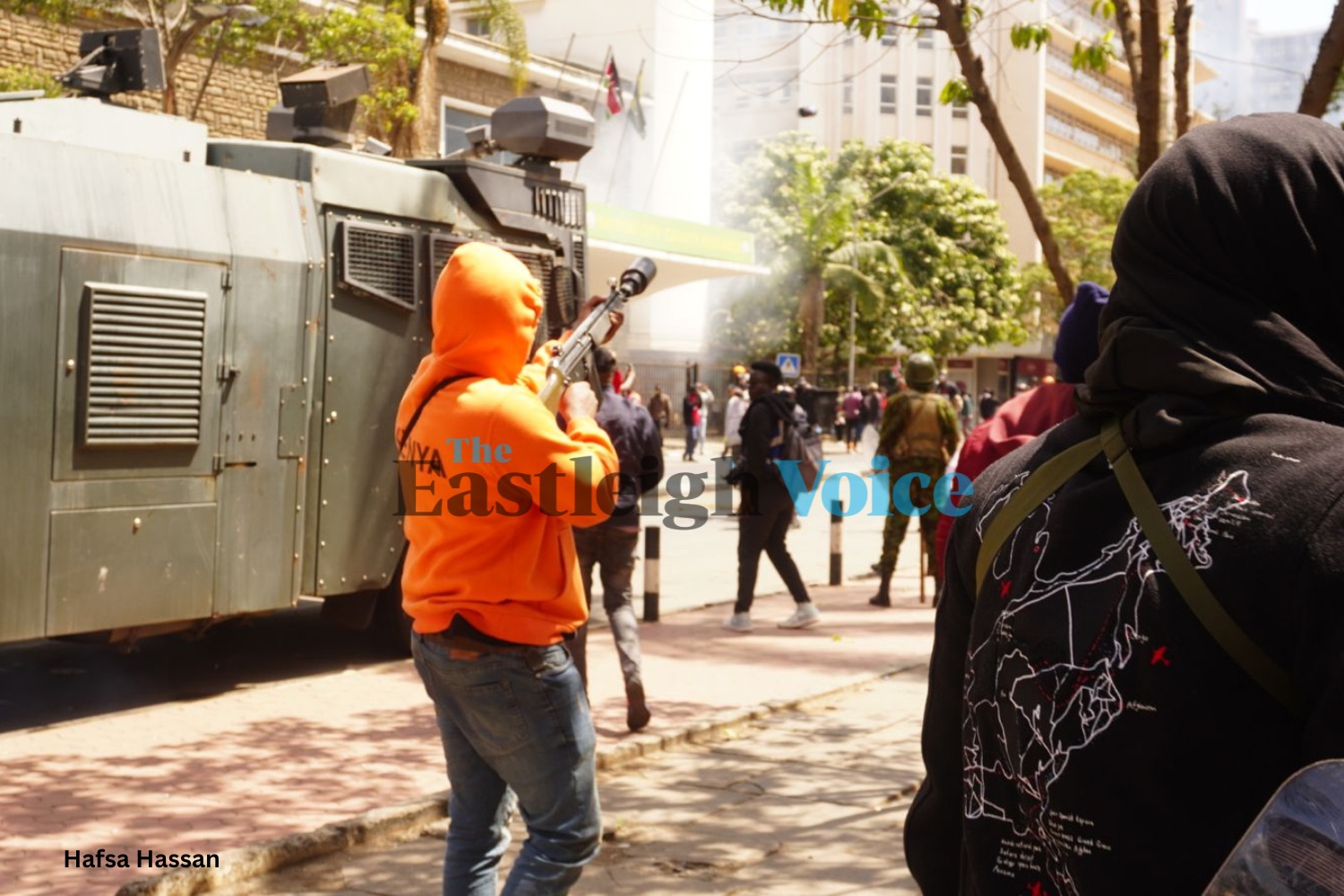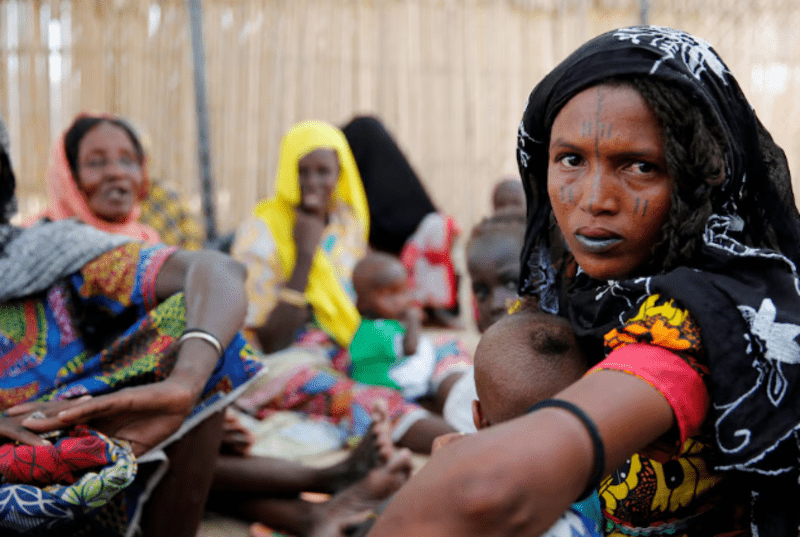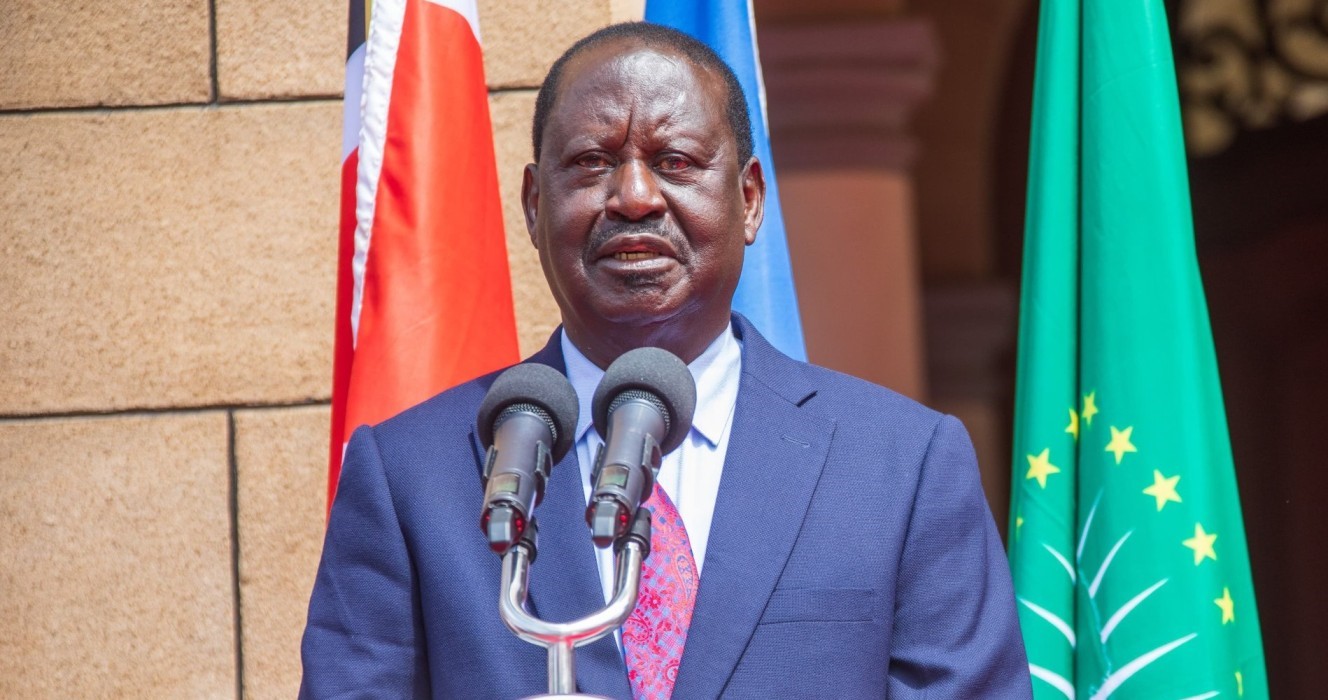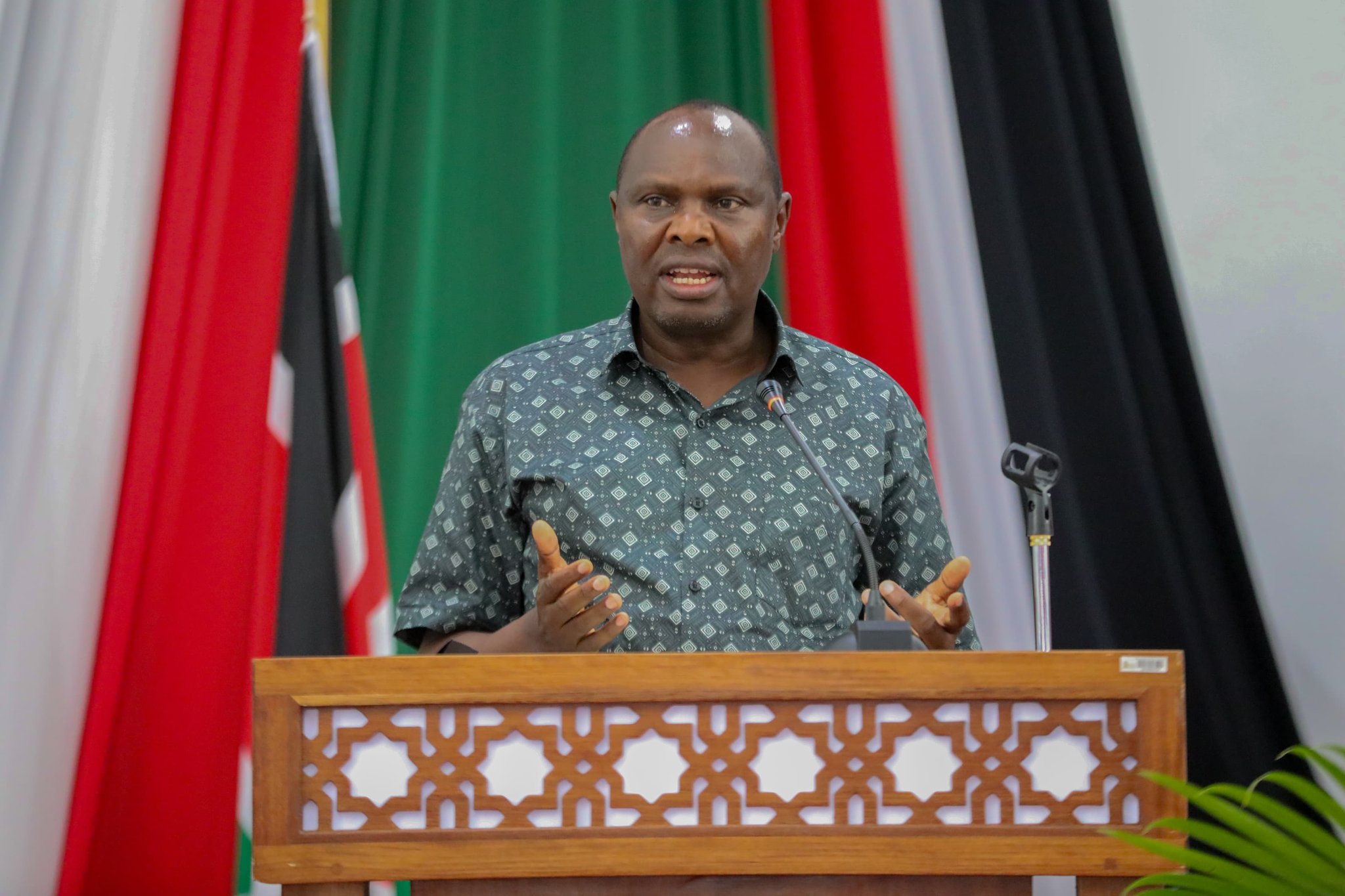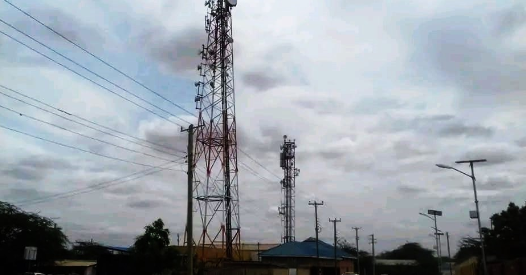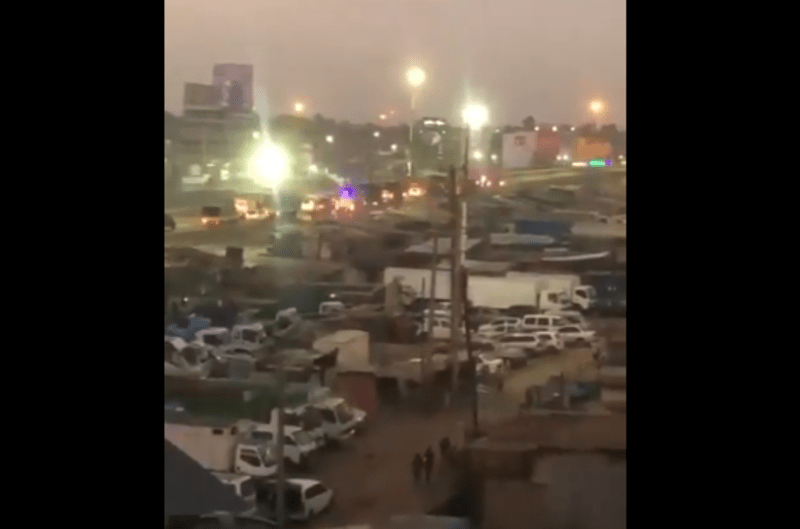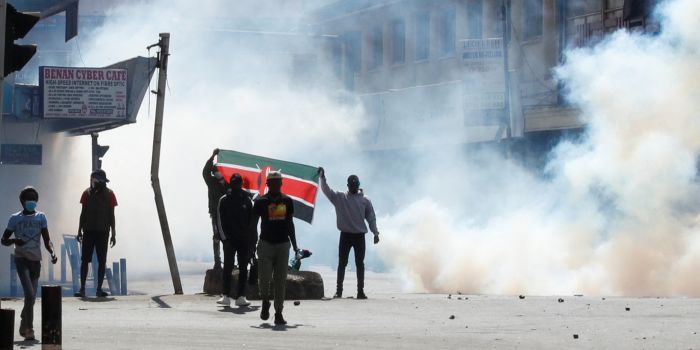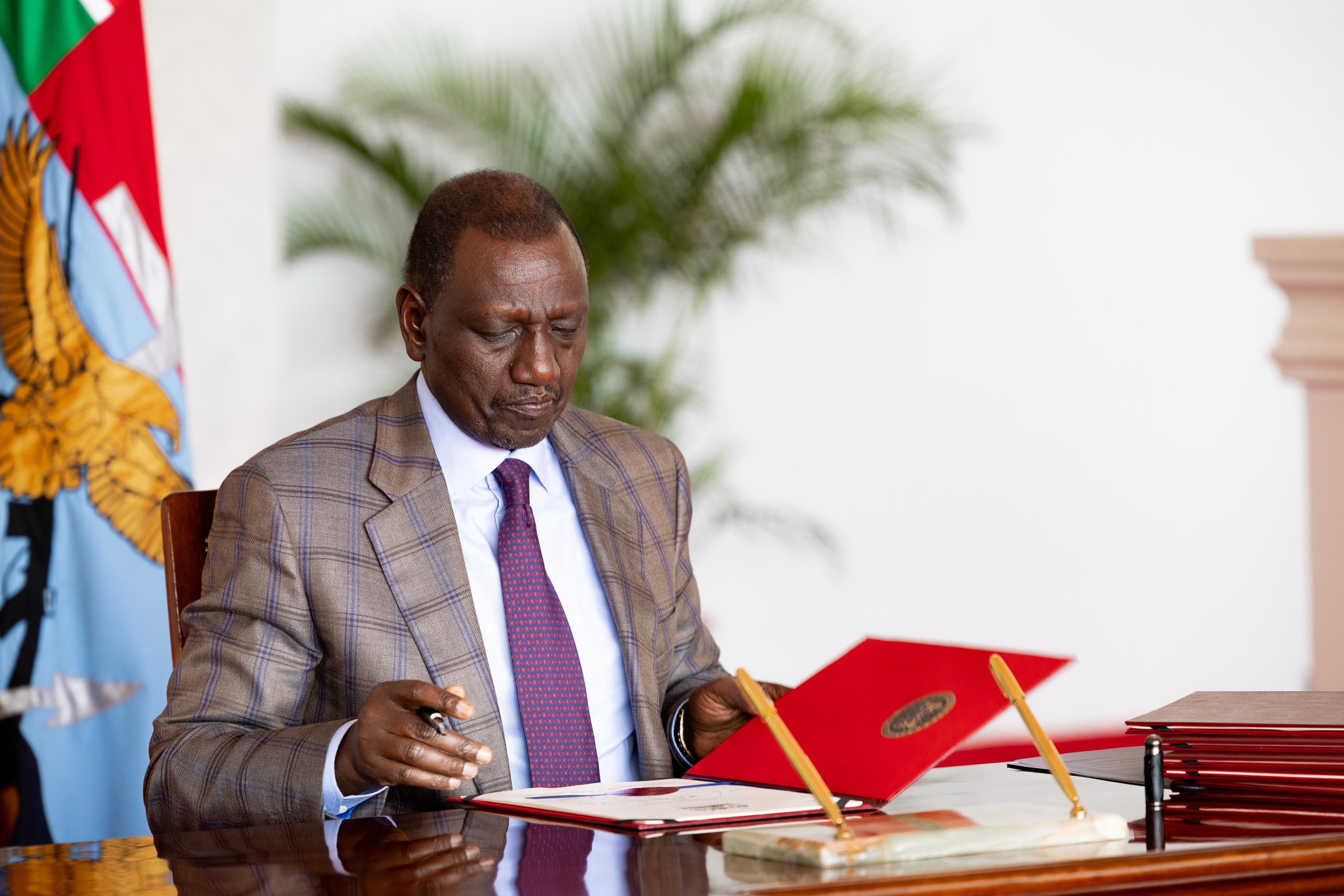Deadly protests leave trail of destruction in Nairobi CBD
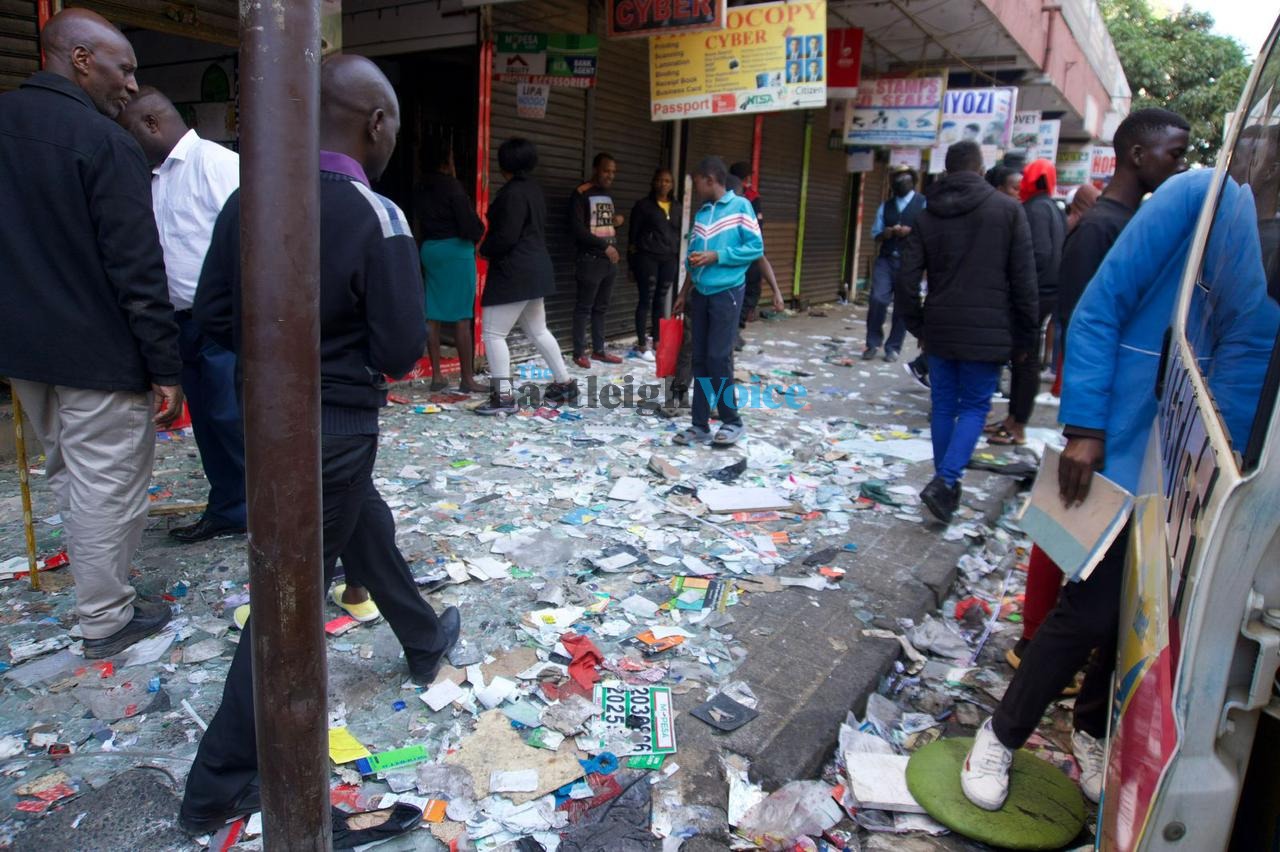
By Maureen Kinyanjui |
Some of the businesses along Tom Mboya Street, Ronald Ngala, Moi Avenue and even Luthuli Avenue, remain closed, including several major supermarkets, leaving shoppers to seek alternatives.
Nairobi's Central Business District is still reeling from the devastation of the "Occupy Parliament" protests that took place on Tuesday.
The aftermath on Wednesday morning is quite visible as the air is still filled with the smell of tear gas.
Keep reading
At the junction of Moi Avenue and Haile Selassie Avenue, people in the CBD could still be seen covering their noses and coughing as they made their way to their respective places of work.
The roads tell their own stories of the unrest, with burnt tyres scattered across several key streets.
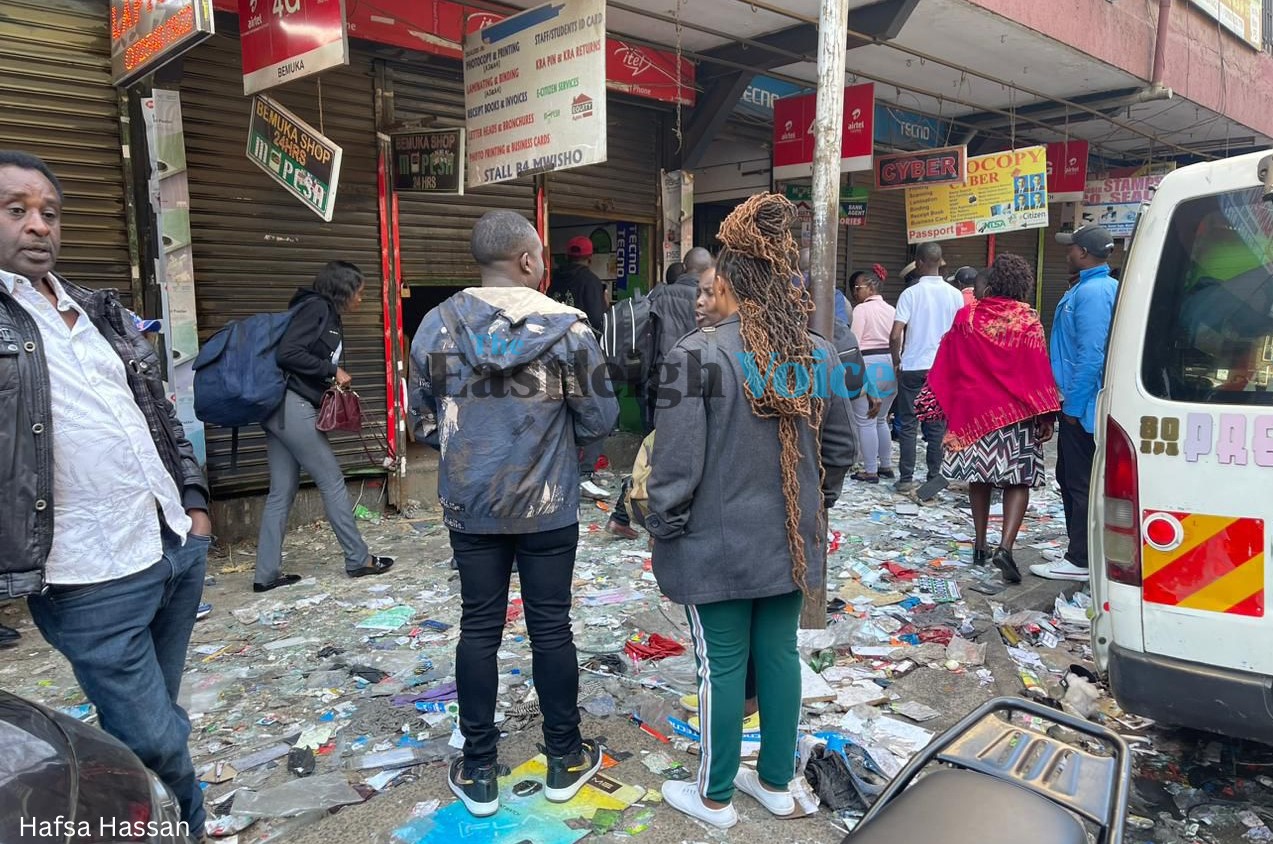 Nairobians view the aftermath of the protests on Mfangano street on June 26, 2024. (Photo: Hafsa Hassan)
Nairobians view the aftermath of the protests on Mfangano street on June 26, 2024. (Photo: Hafsa Hassan)
Along Moi Avenue, various spots showed charred remains marking the spots where fires were lit during Tuesday's demonstrations.
Walking through the CBD, one can't help but notice the extent of the chaos that unfolded hours earlier.
The streets themselves are filled with litter, a mix of protest debris and everyday trash, adding to the overall sense of chaos.
Plastic bottles, torn papers, and even uprooted seedlings highlight the intensity of the confrontation between protesters and police.
The aftermath of fire at Uganda House building along Kenyatta Avenue following Tuesday's protests.
— The Eastleigh Voice (@Eastleighvoice) June 26, 2024
Uganda's Permanent Secretary Bagiire Vincent Waiswa through a statement has condemned the act: "We condemn in the strongest terms, violence that leads to destruction of property… pic.twitter.com/G2I9JodTiX
Some of the businesses along Tom Mboya Street, Ronald Ngala, Moi Avenue and even Luthuli Avenue, remain closed, including several major supermarkets, leaving shoppers to seek alternatives.
Broken glass and doors are a common sight, portraying the vandalism that took place. The financial impact on these businesses is evident, with many shop owners facing significant repair costs.
The closures and damages have not only affected business owners but also employees who depend on them for their daily wages.
How many parts of Nairobi CBD look like after the Tuesday protests pic.twitter.com/Y7n6r3iRpm
— The Eastleigh Voice (@Eastleighvoice) June 26, 2024
However, some business owners bravely reopened their doors including beauty shops, mobile accessories outlets, boutiques and some restaurants.
Along Mfangano Street, one of the major supermarkets was looted with items destroyed while Sunbeam Mall was razed.
The situation was not different along Mama Ngina Street and Wabera Street as shops which were vandalised remained as empty shells.
At the Nairobi County Assembly building, debris of destroyed walls, and broken glasses welcomed the staff and ward representatives on Wednesday morning.
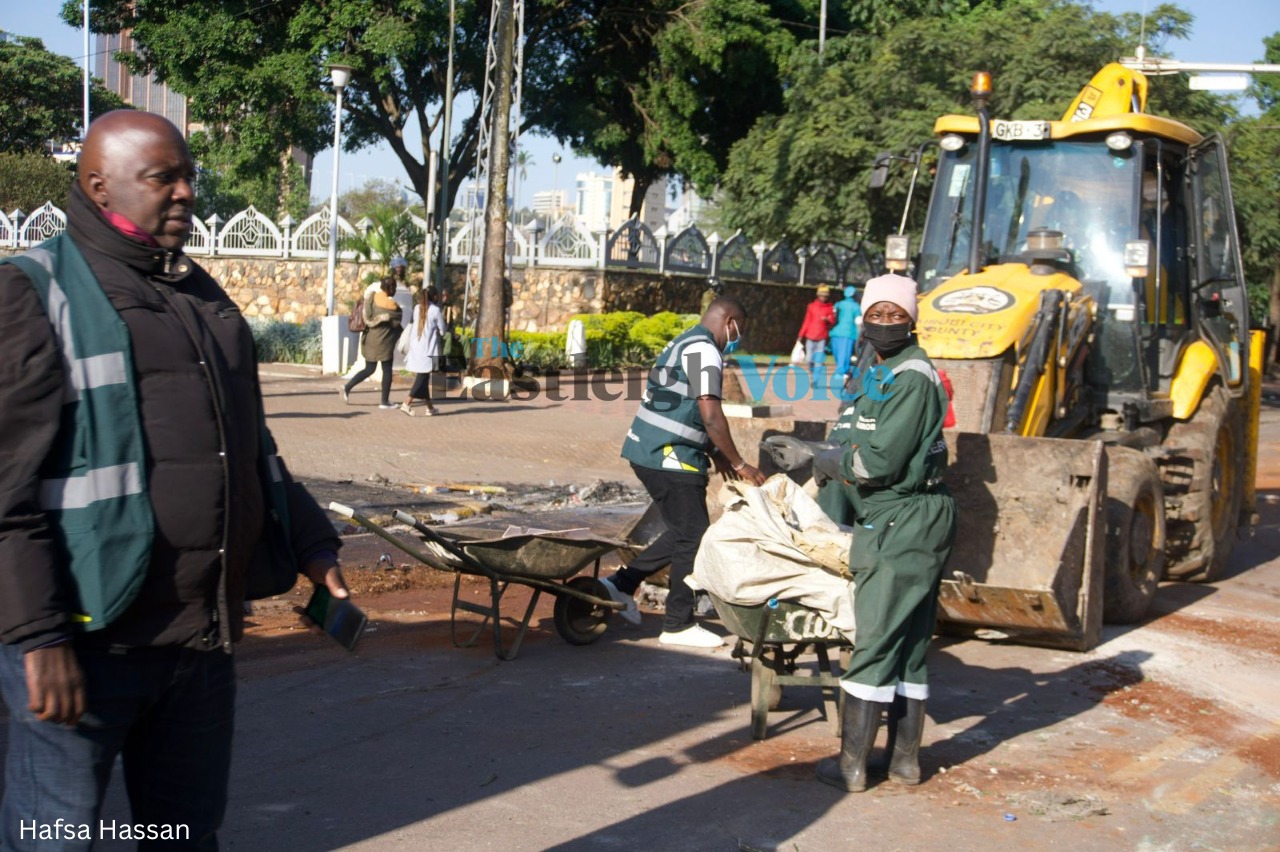 Nairobi County's Green Army removing debris outside the Office of the Governor at City Hall on June 26, 2024. (Photo: Hafsa Hassan)
Nairobi County's Green Army removing debris outside the Office of the Governor at City Hall on June 26, 2024. (Photo: Hafsa Hassan)
Inside the chambers, some television screens were seen hanging while some of the seats had been partly torn.
The Supreme Court was also not spared as its entrance was filled with pieces of broken glass and stones.
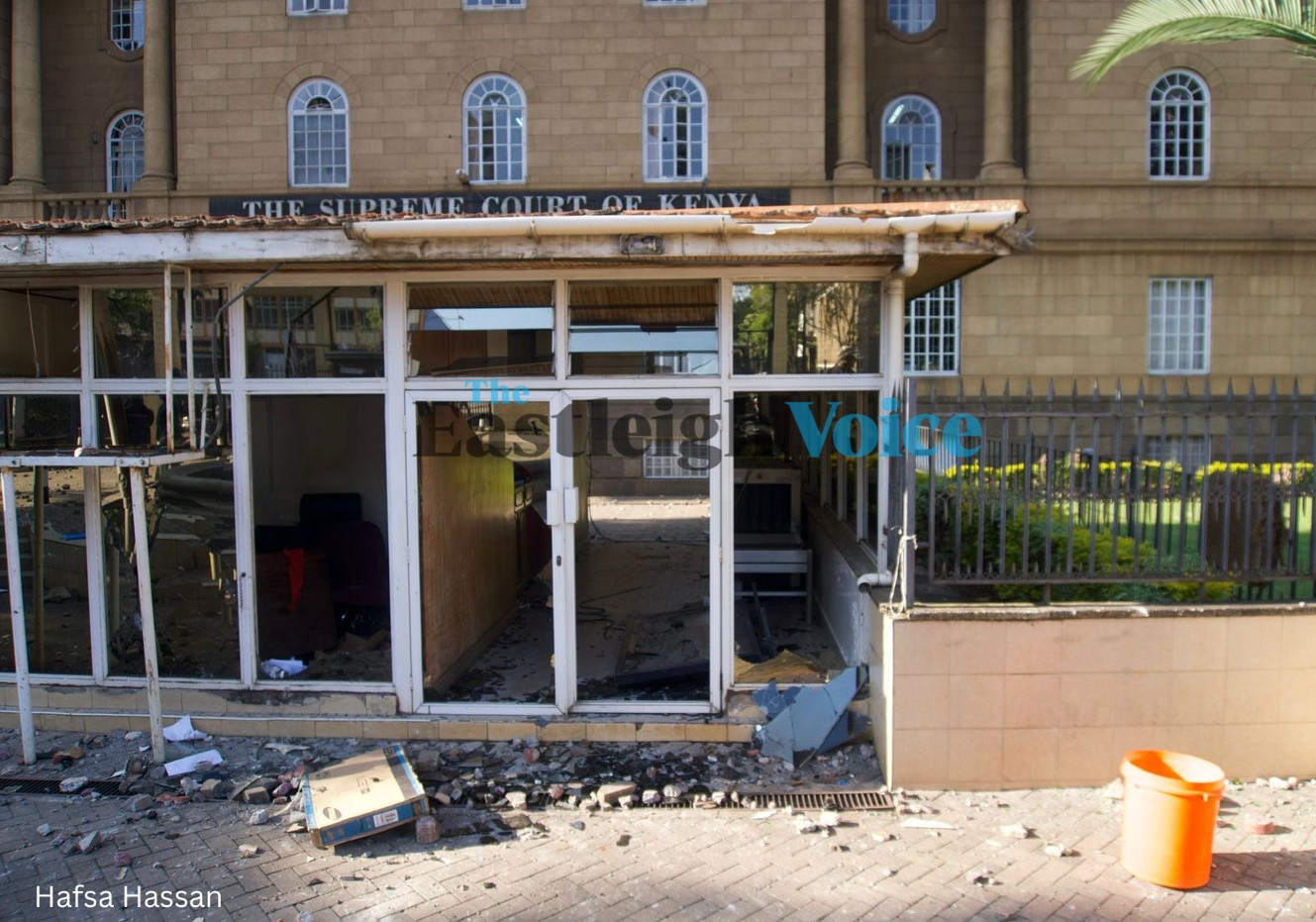 The entrance of the Supreme Court was damaged after protesters stormed the premises during the Anti-Finance Bill demonstrations. (Photo: Hafsa Hassan)
The entrance of the Supreme Court was damaged after protesters stormed the premises during the Anti-Finance Bill demonstrations. (Photo: Hafsa Hassan)
The protests, which began on Tuesday, were sparked by the passage of the contentious Finance Bill, 2024 by Members of Parliament.
President Ruto in his address to the nation on Tuesday evening issued a stern warning to those allegedly behind the chaos that erupted during the anti-Finance Bill protest.
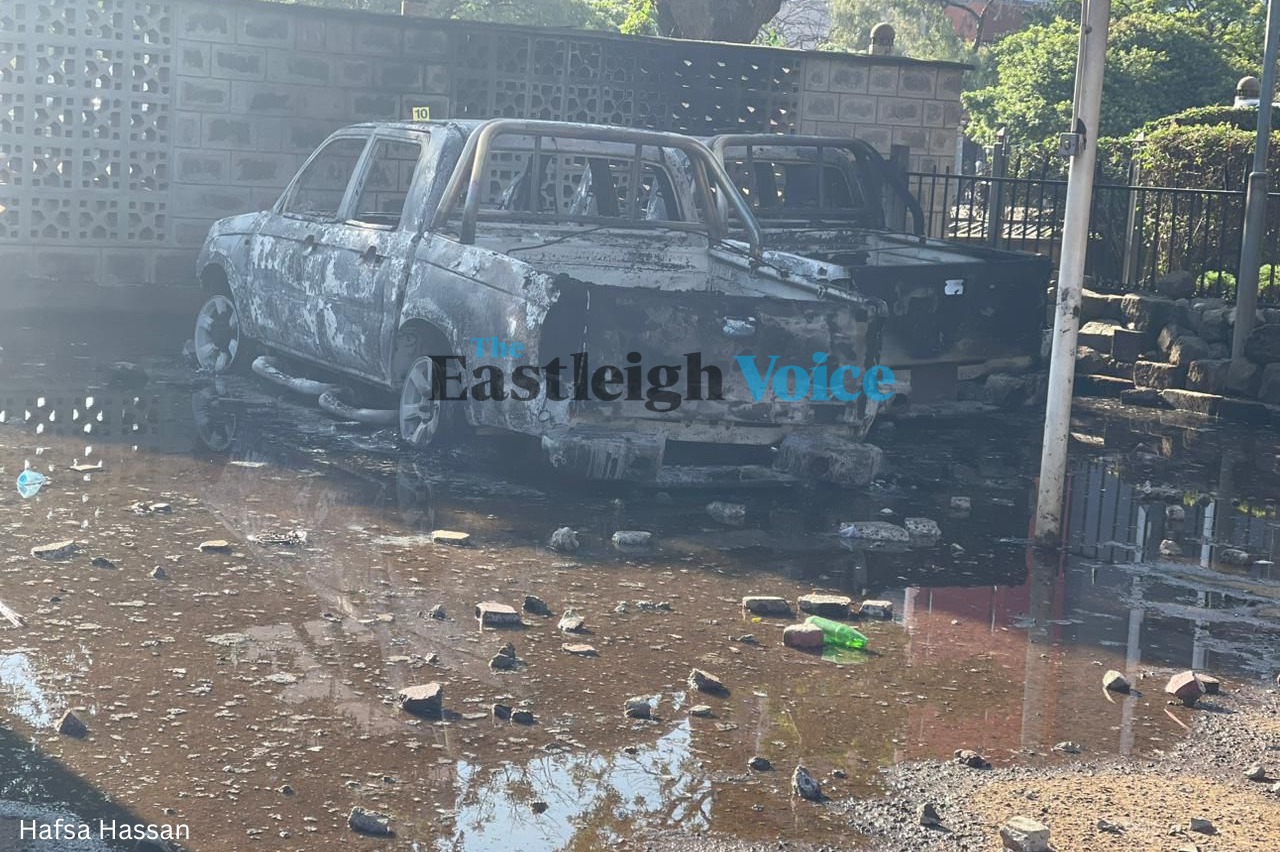 A burnt vehicle outside the Supreme Court building on June 26, 2024. (Photo: Hafsa Hassan)
A burnt vehicle outside the Supreme Court building on June 26, 2024. (Photo: Hafsa Hassan)
He said that he will continue to lead a government that is fully committed to protecting the sovereignty of the country and protecting lives.
"The country shall treat every threat to the state as an existential danger to Kenya's security. The government will provide a swift, full and effective response to today's treasonous event," Ruto said.
“I assure the nation that the government has mobilised all resources at the nation’s disposal to ensure that a situation of this nature will not recur again, at whatever cost.”


